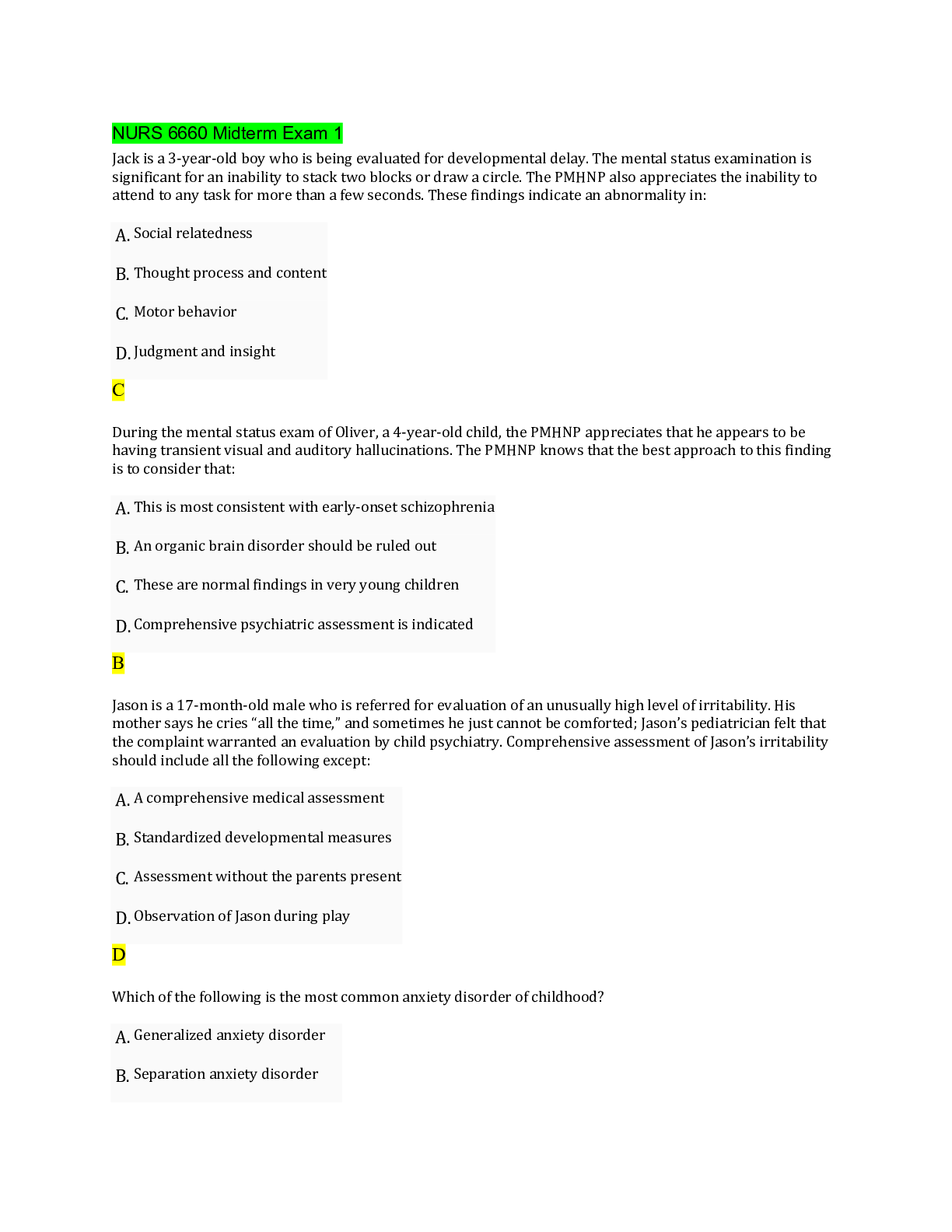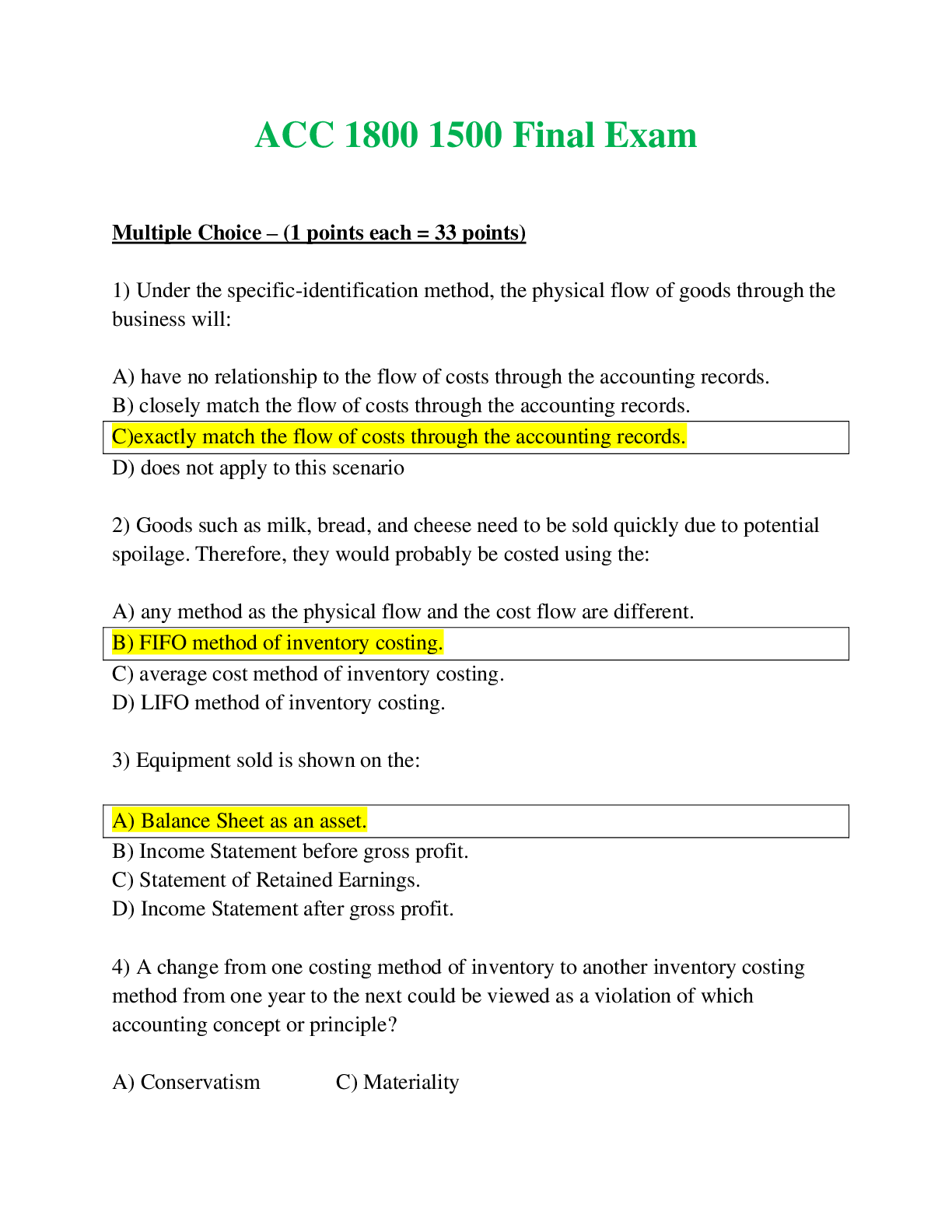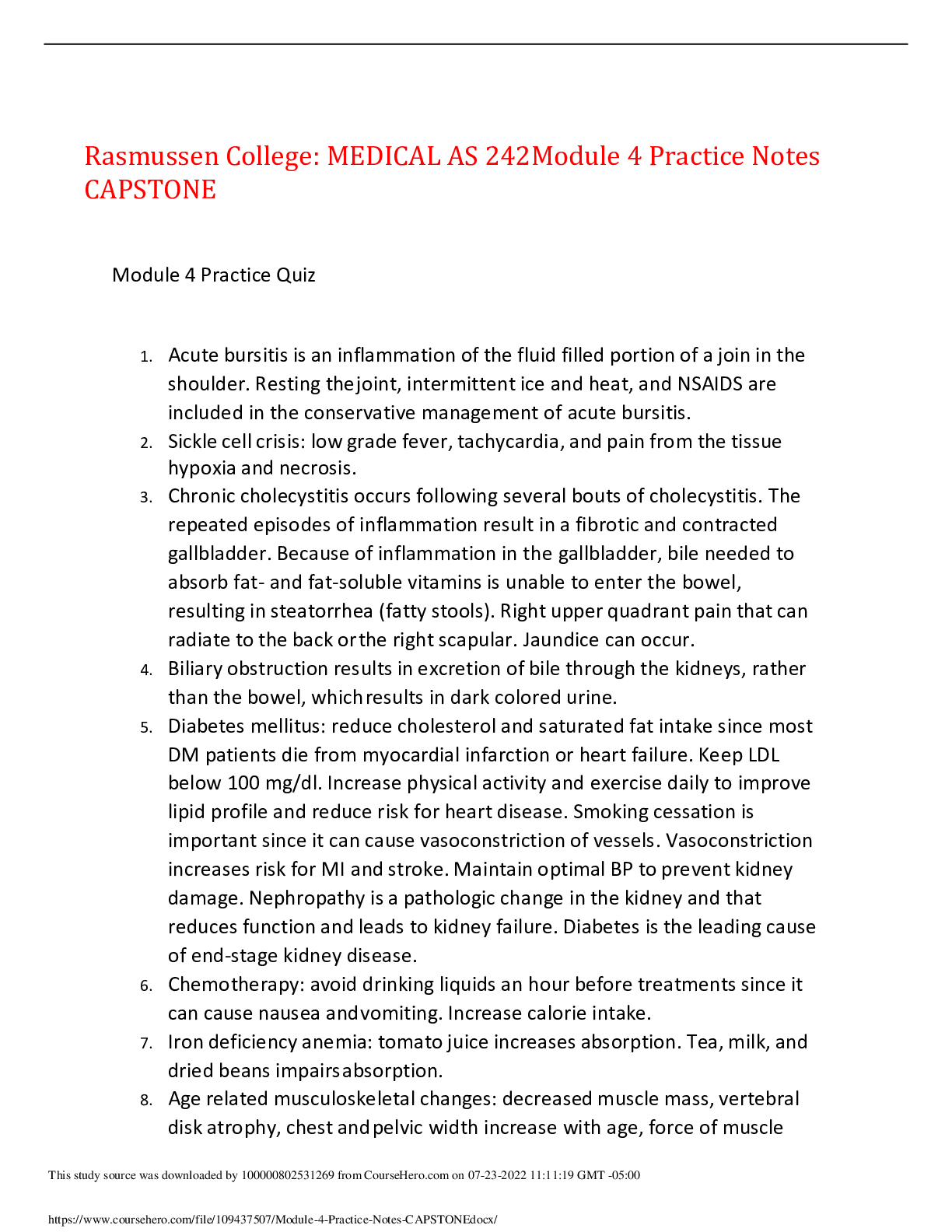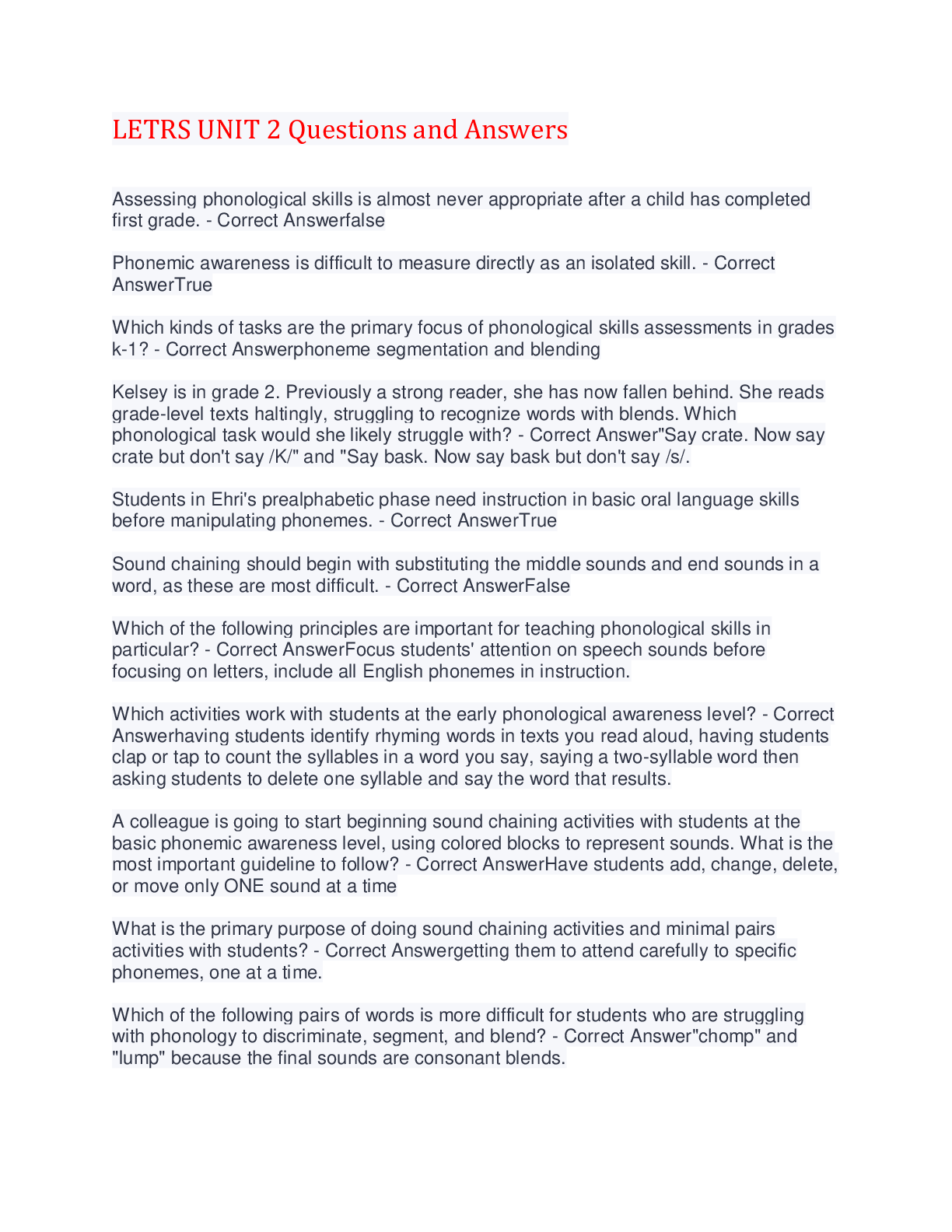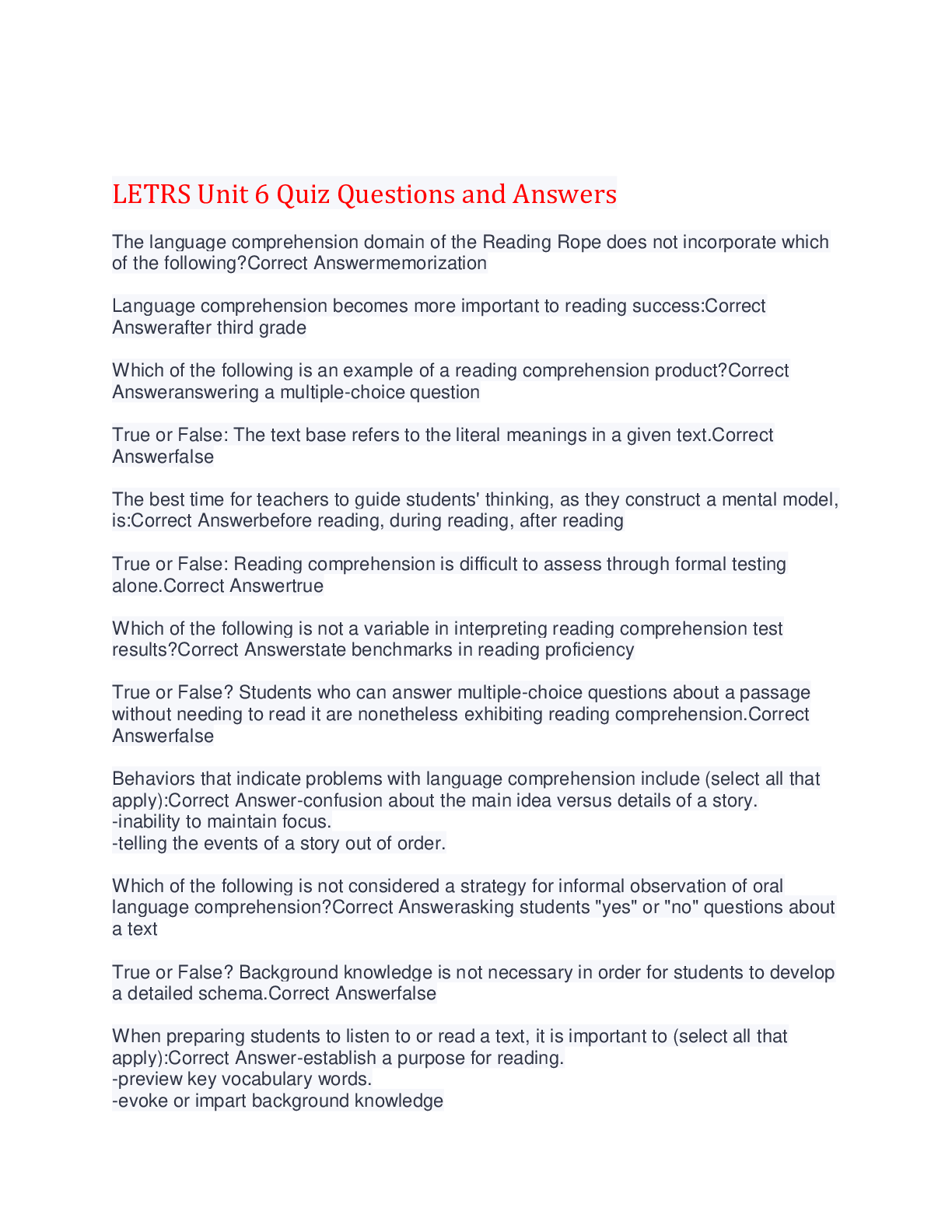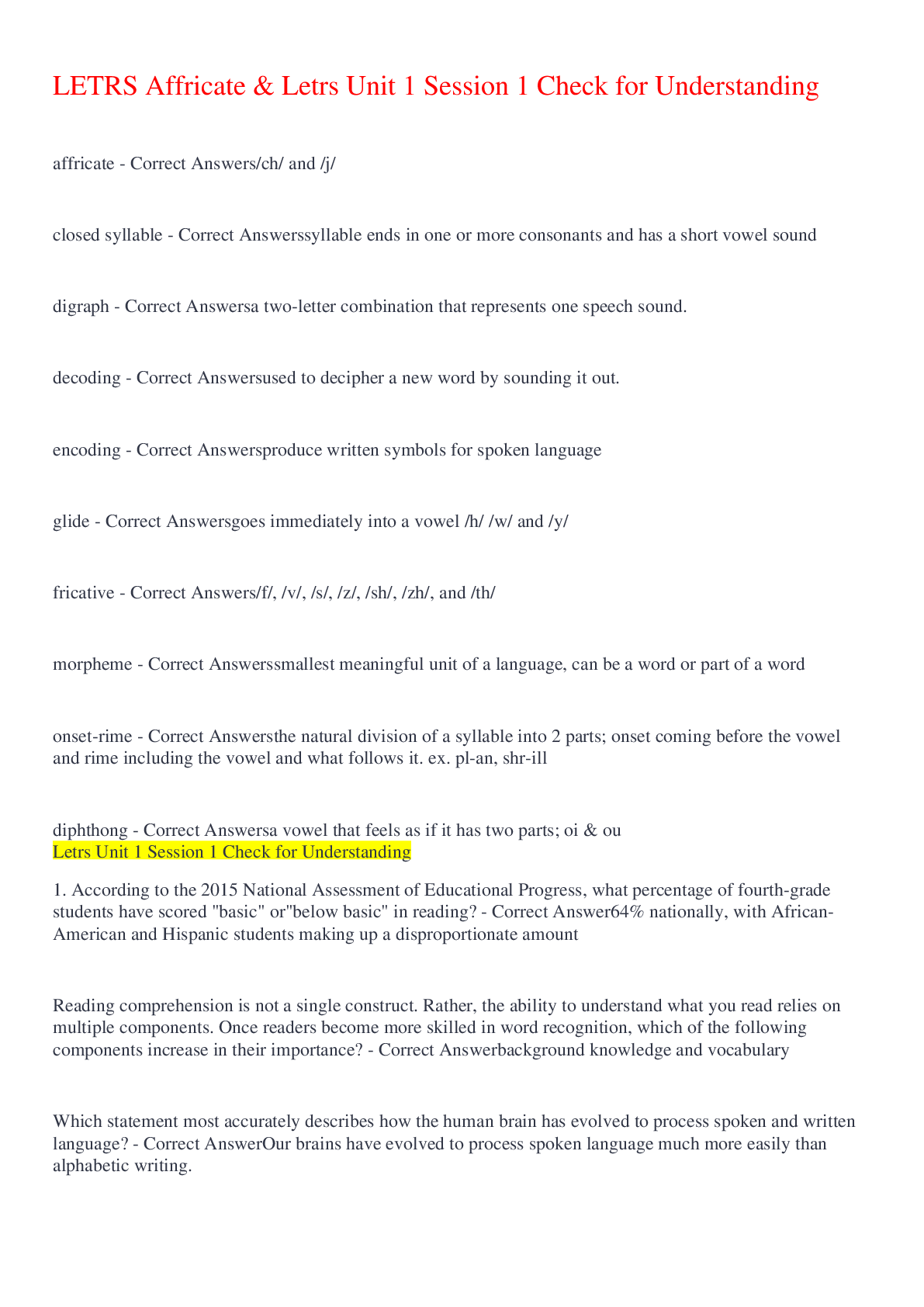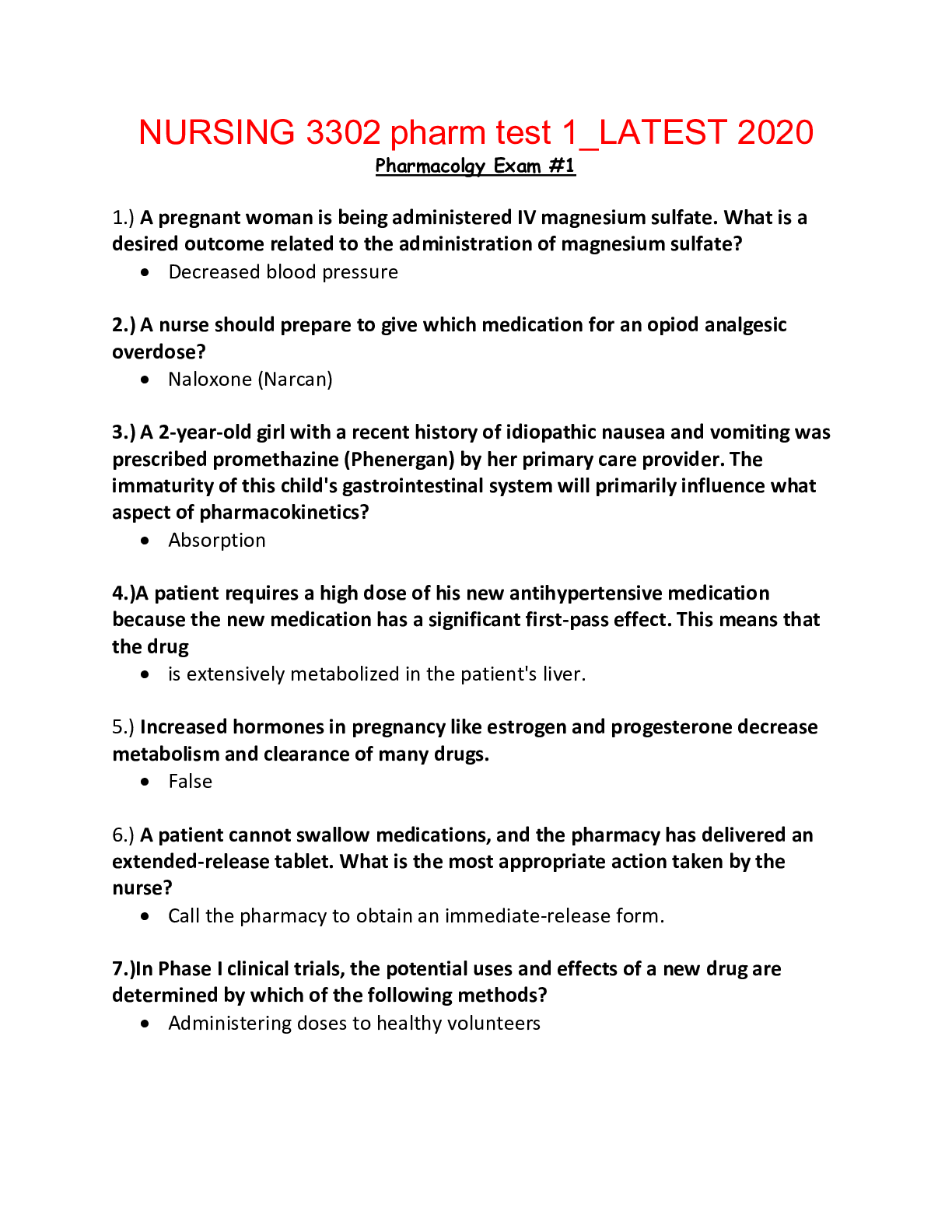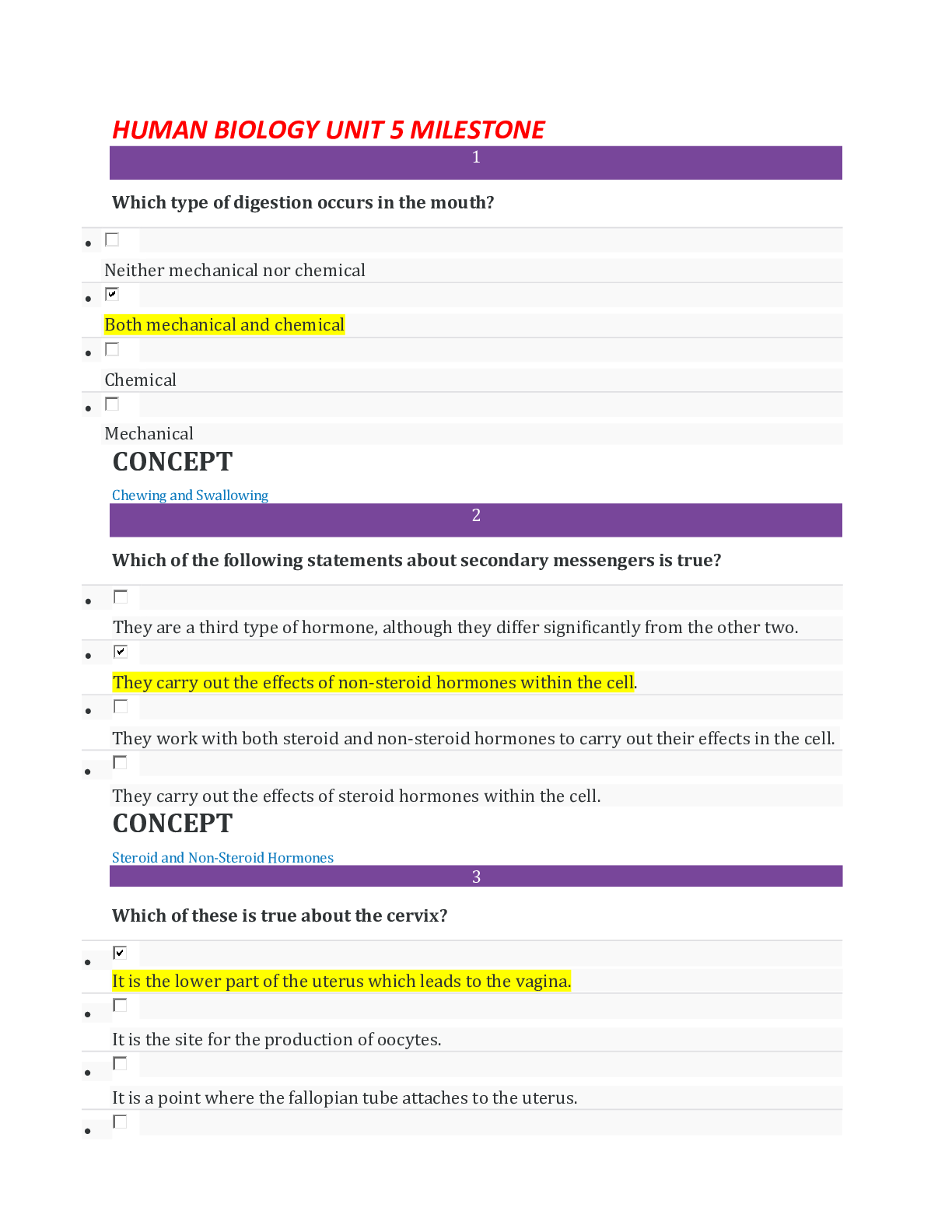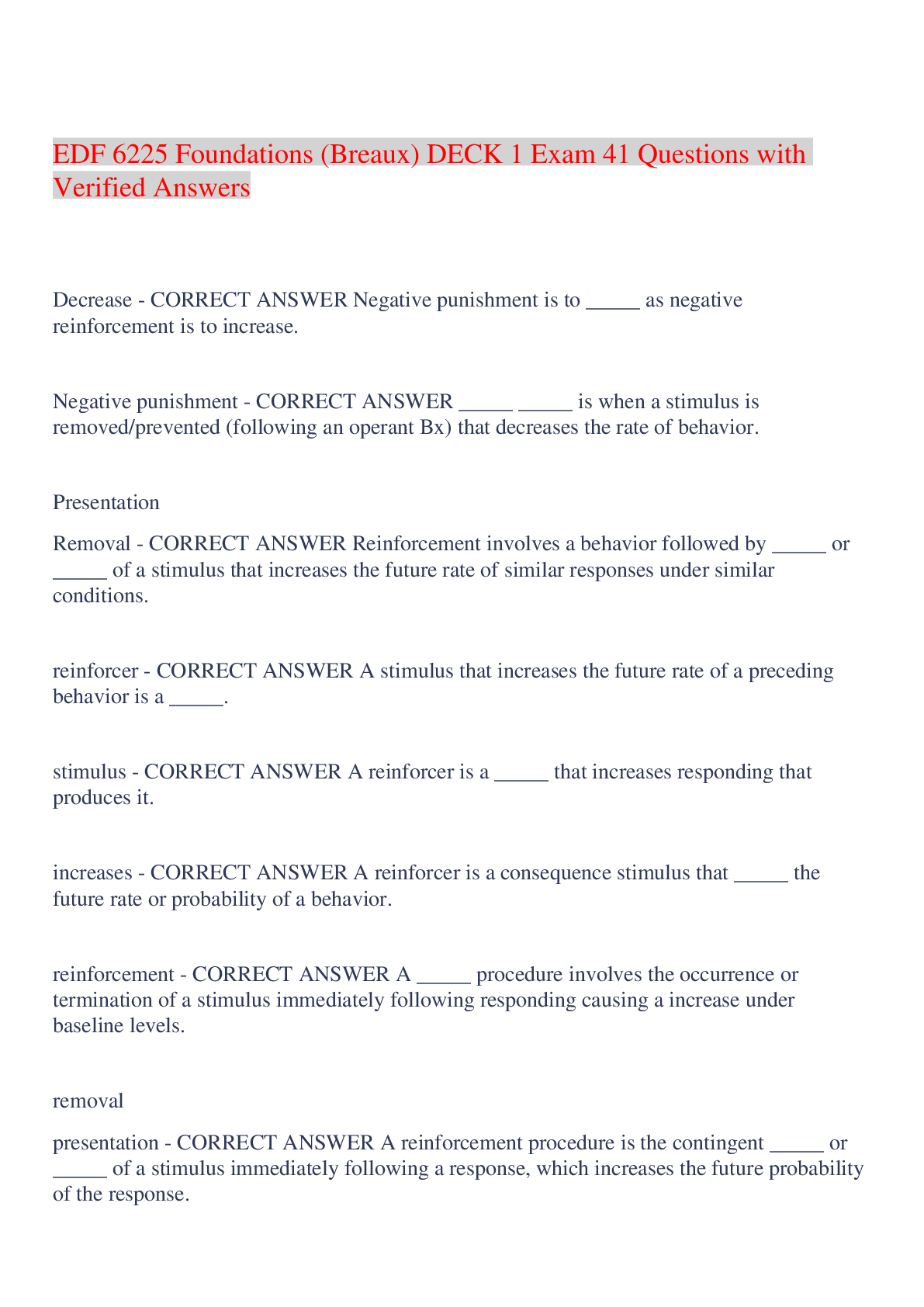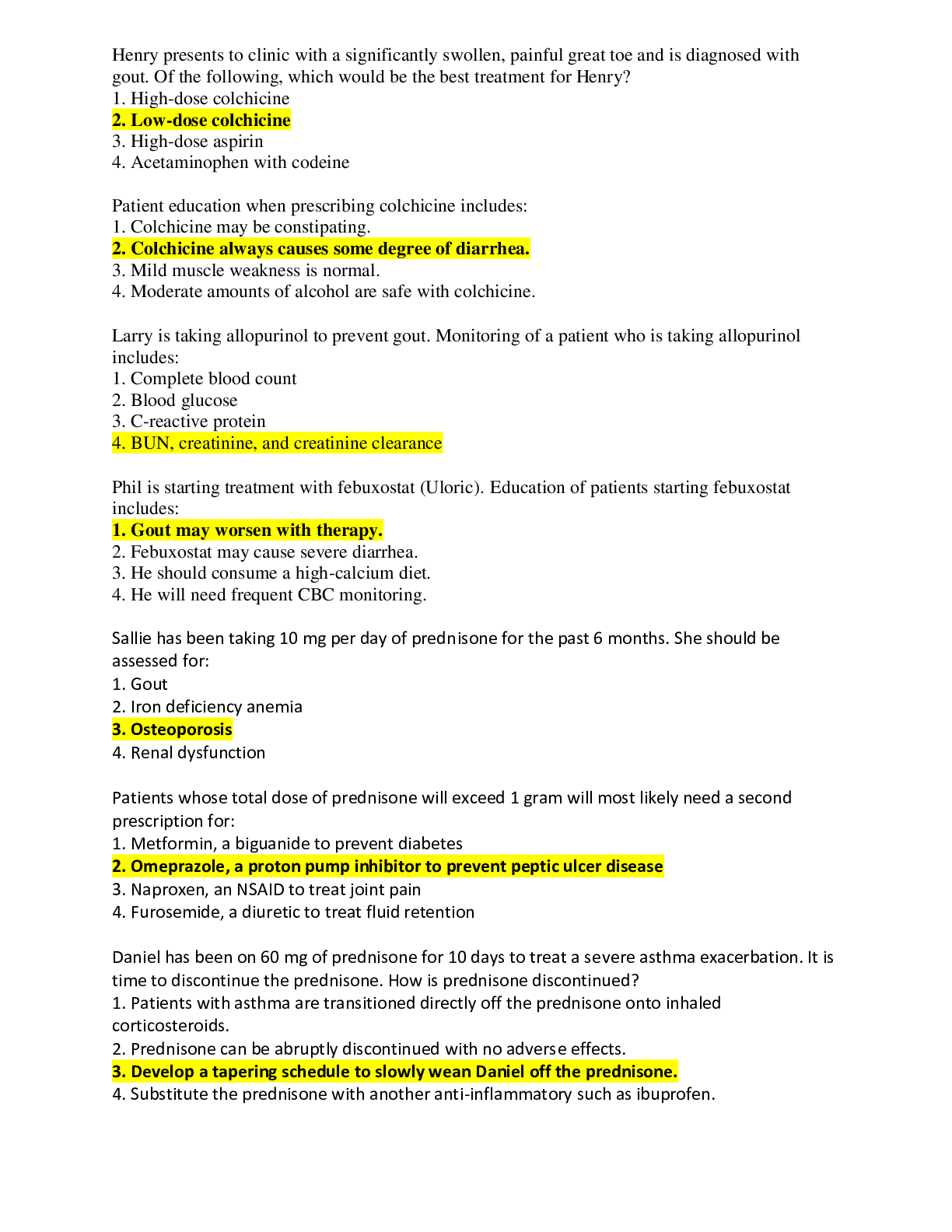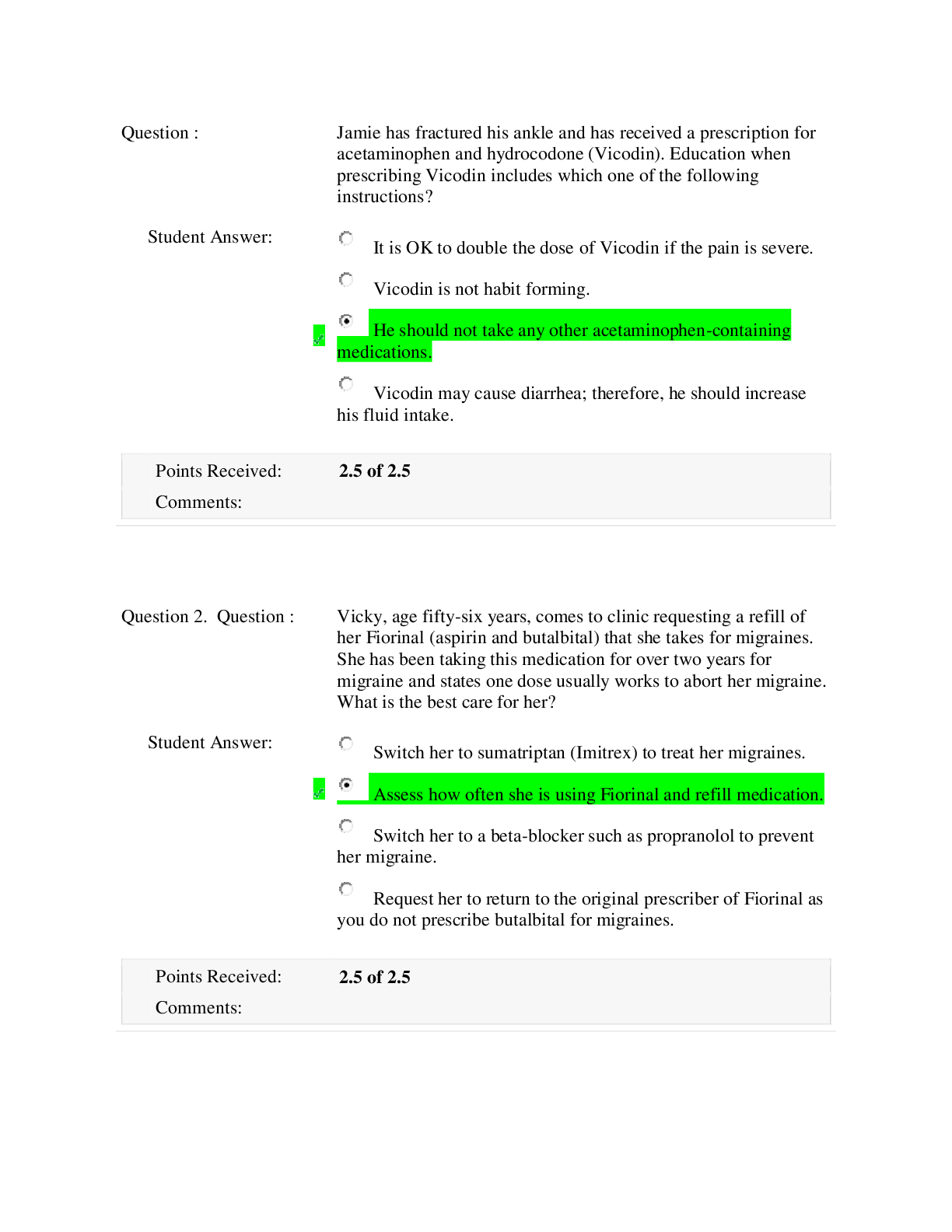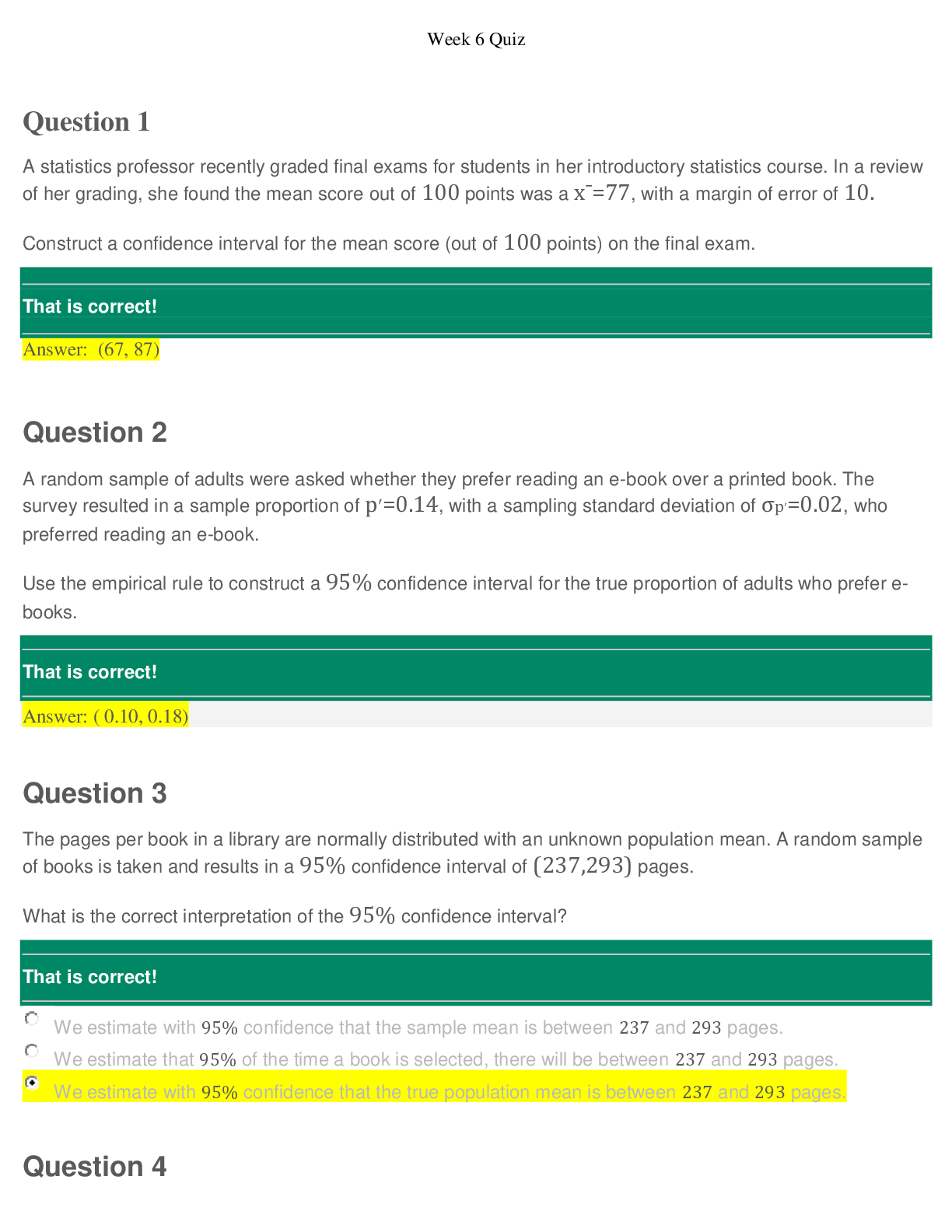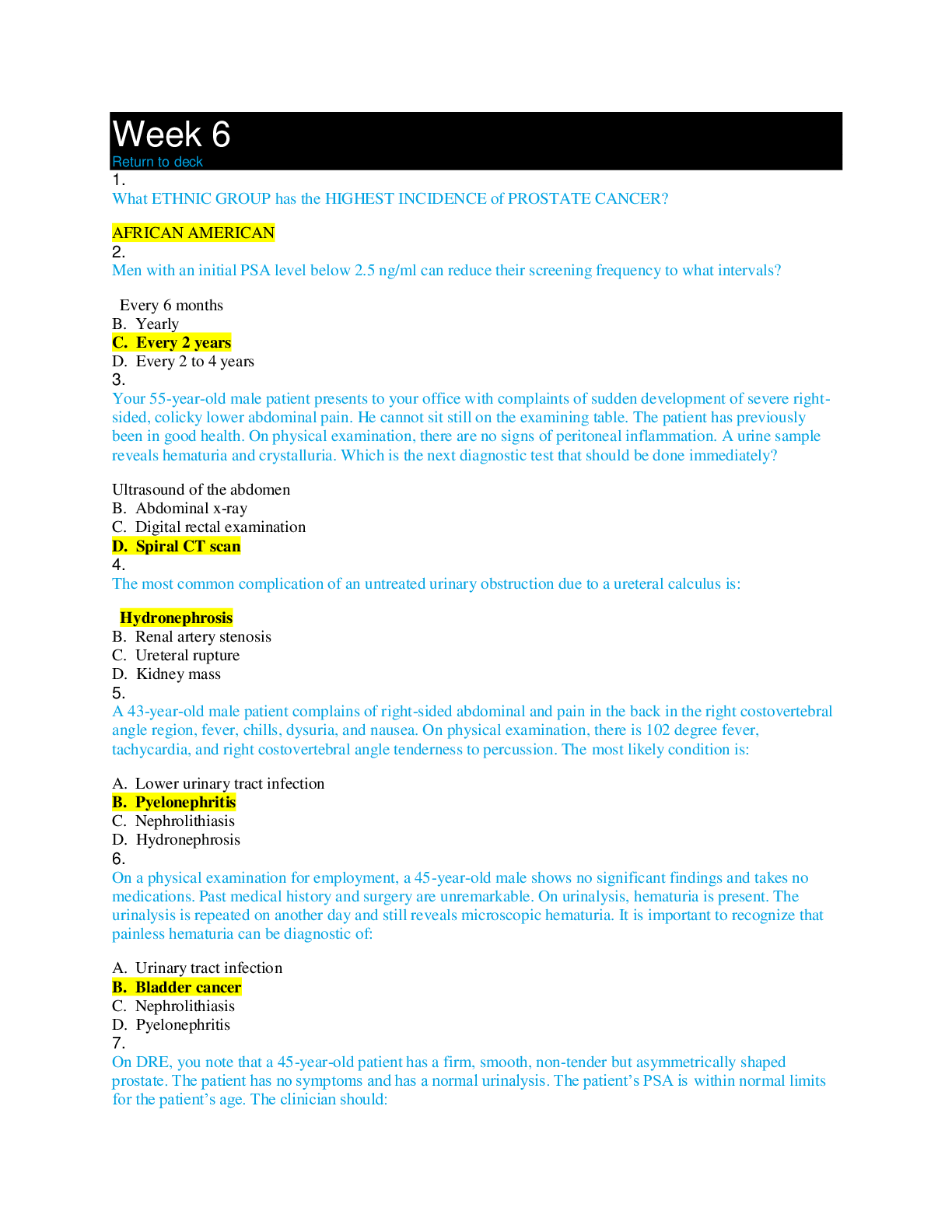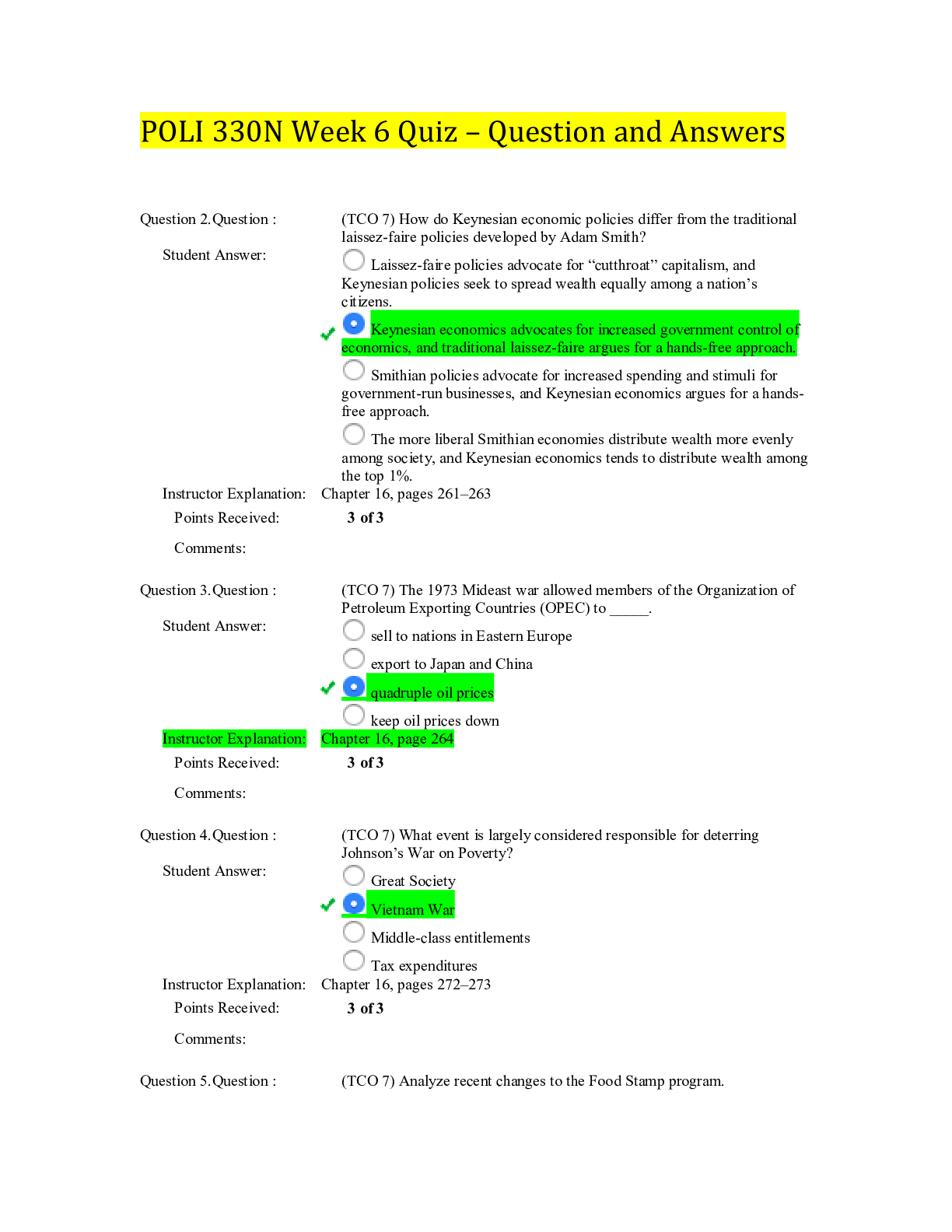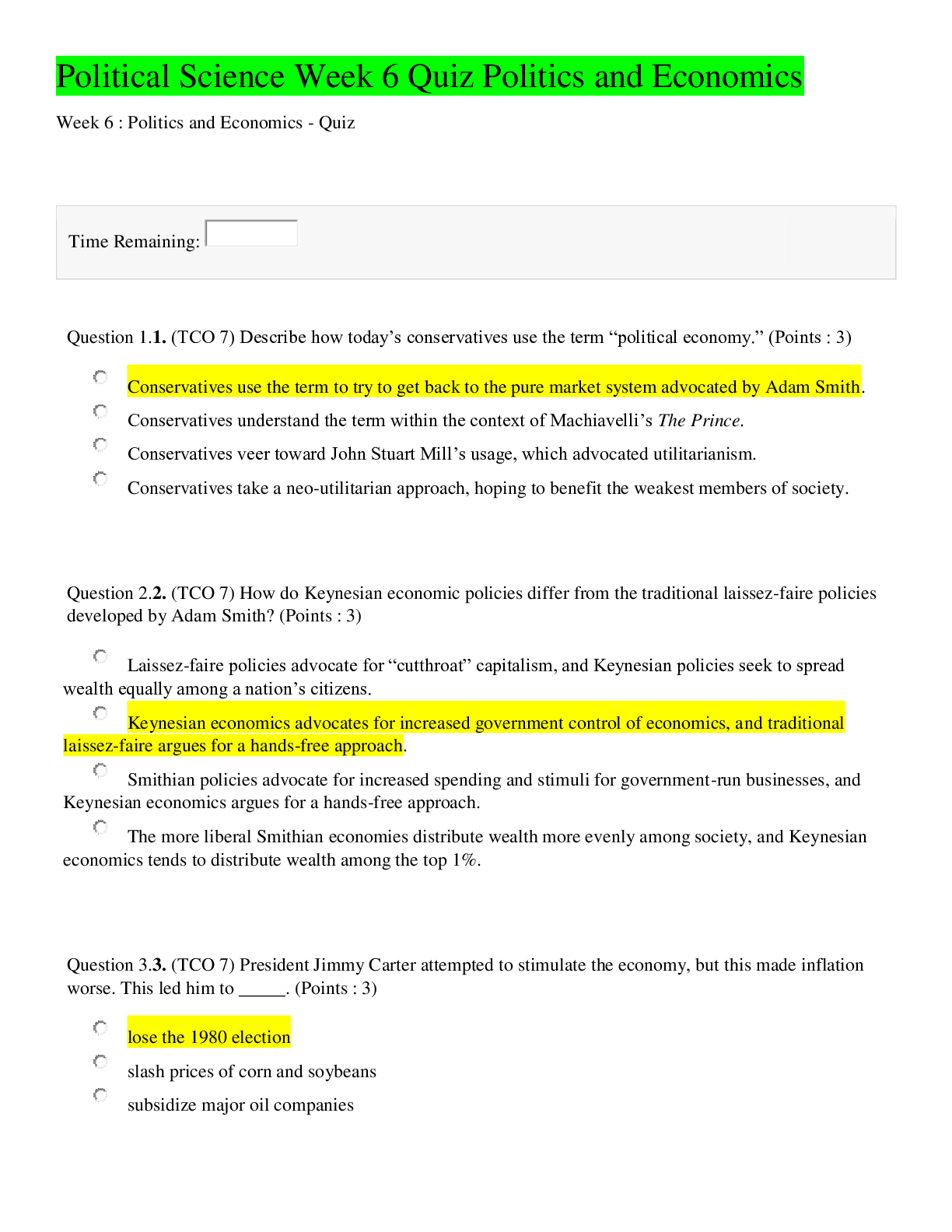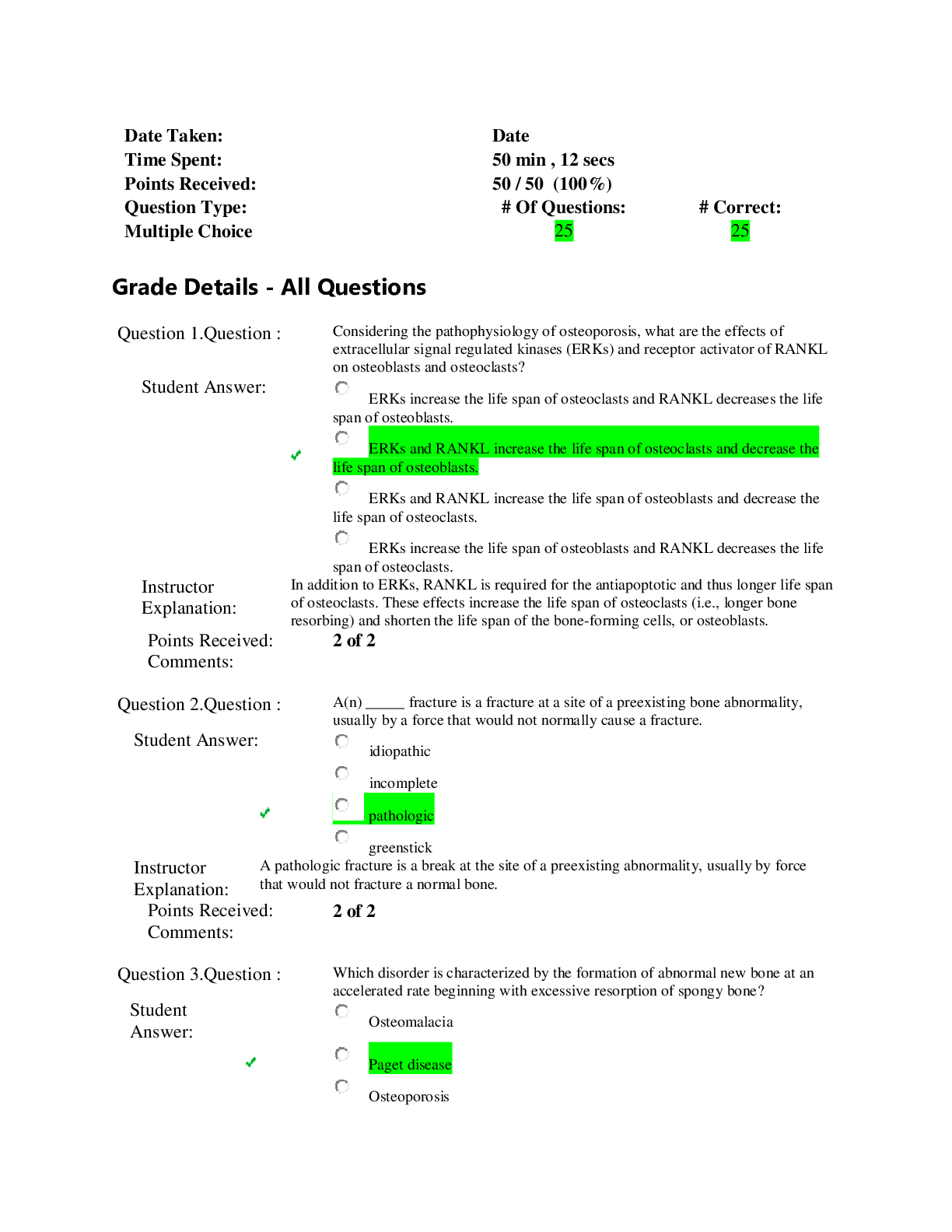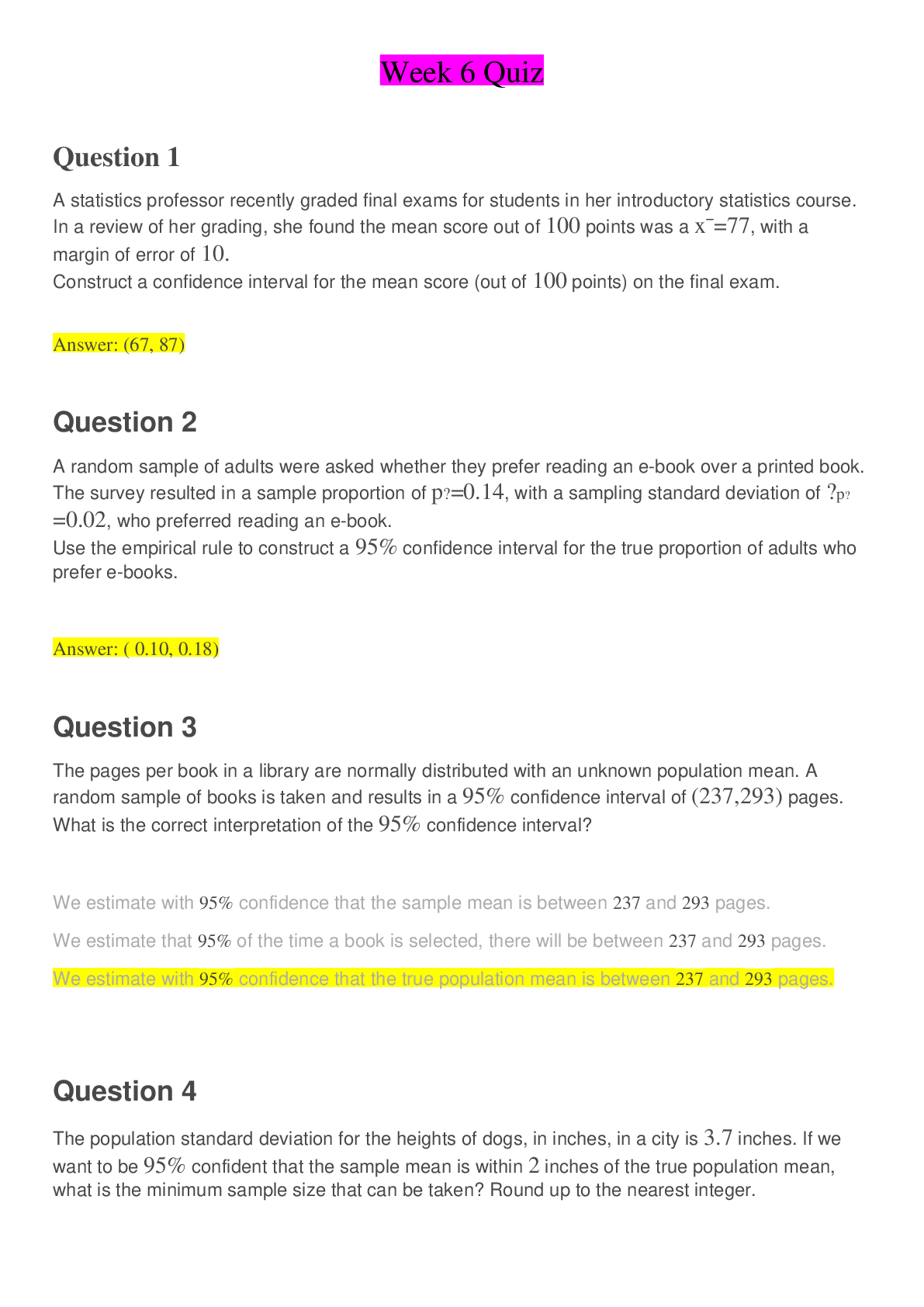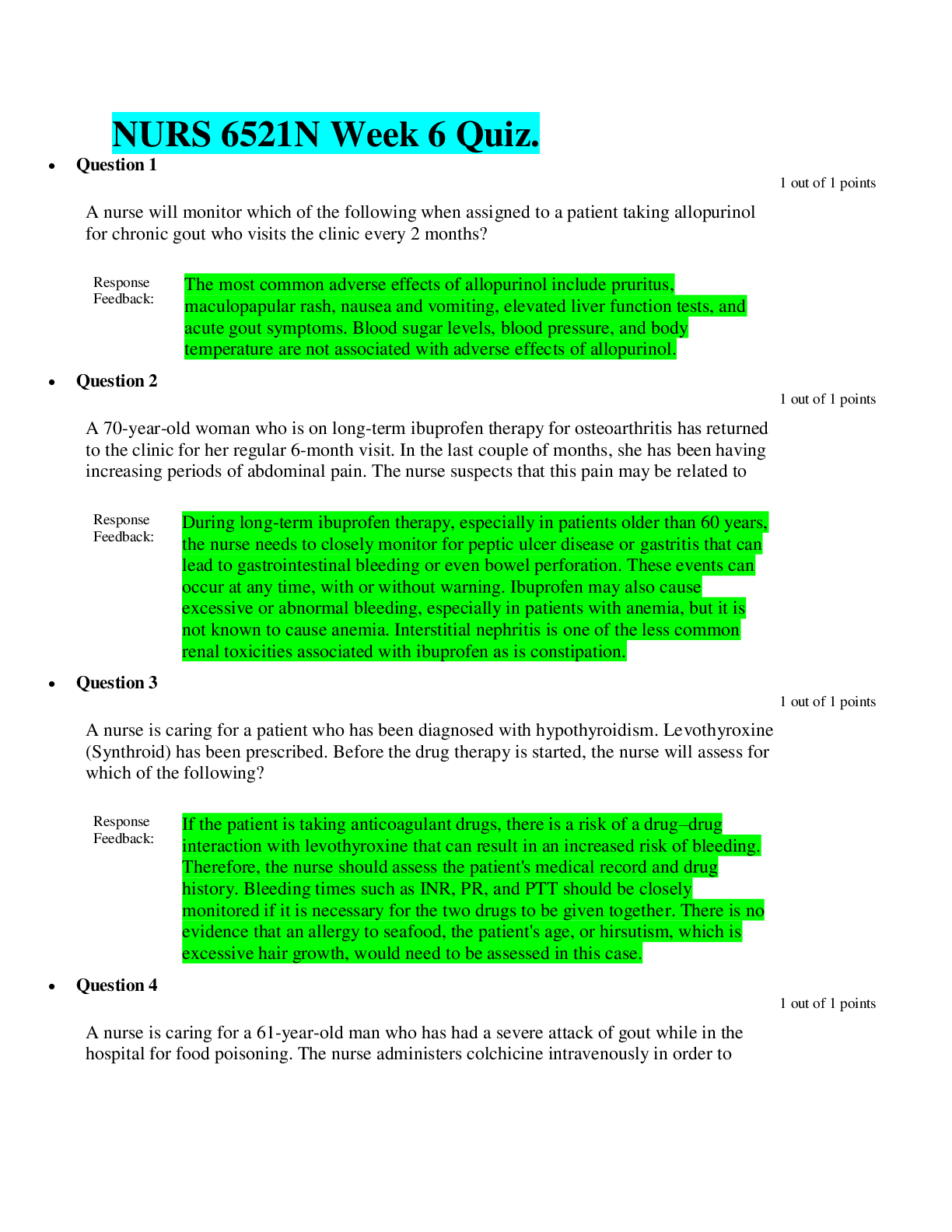NURS 6541 Week 6 Quiz 3,100% CORRECT
Document Content and Description Below
A nurse is preparing to teach the staff about asthma. Which information should the nurse include? Airway obstruction contributing to increased airflow resistance and hypoventilation in asthma is cause... d by: • Question 2 1 out of 1 points A 42-year-old male was involved in a motor vehicle accident during which he suffered a severe head injury. He died shortly after the accident from loss of respiration. The nurse suspects the area of the brain most likely involved is the: • Question 3 1 out of 1 points A 6-month-old female presents with rhinorrhea, cough, poor feeding, lethargy, and fever. She is diagnosed with bronchiolitis. Which of the following will the nurse most likely observe on the culture report? • Question 4 1 out of 1 points A nurse is teaching staff about pulmonary edema. Which information should the nurse include? The most common cause of pulmonary edema is: • Question 5 1 out of 1 points A 25-year-old male presents with chronic bronchitis of 5 months’ duration. When obtaining the patient’s history, which of the following findings is most likely to cause this condition? • Question 6 1 out of 1 points An 11-year-old female presents with a low-grade fever and cough. She is diagnosed with atypical pneumonia. What type of pneumonia does the nurse suspect the patient is experiencing? • Question 7 1 out of 1 points A 65-year-old male recently had a cerebrovascular accident that resulted in dysphagia. He now has aspiration of gastric contents. The nurse assesses the patient for which complication? • Question 8 1 out of 1 points A geneticist is discussing cystic fibrosis (CF). Which information should be included? CF is an _____ disease. • Question 9 1 out of 1 points When the nurse observes a diagnosis of nosocomial pneumonia, the patient generally acquires this pneumonia: • Question 10 1 out of 1 points A 50-year-old diabetic male did not take his medication and is now in metabolic acidosis. He is experiencing Kussmaul respirations. What type of breathing will the nurse observe upon assessment? • Question 11 1 out of 1 points A 22-year-old female presents with chronic bronchitis. Tests reveal closure of the airway during expiration. While planning care, a nurse recalls this condition is most likely caused by: • Question 12 1 out of 1 points A 60-year-old female with a 25-year history of smoking is diagnosed with emphysema. She has an increased anterior-posterior chest diameter. The nurse attributes this finding to: • Question 13 1 out of 1 points A 25-year-old male presents with chronic bronchitis of 5 months’ duration. Which of the following is the most significant concern for the nurse to monitor in this patient? • Question 14 1 out of 1 points A 47-year-old male is diagnosed with pulmonary edema. Which assessment findings will the nurse observe? • Question 15 1 out of 1 points A young patient is admitted to the pediatric unit with cystic fibrosis (CF) exacerbation. The nurse monitors the patient closely because the main cause of death in a child with CF is: • Question 16 1 out of 1 points A 20-year-old male presents to his primary care provider reporting difficulty breathing when lying down. What term should the nurse use to document this condition? • Question 17 1 out of 1 points A 10-year-old female develops pneumonia. Physical exam reveals subcostal and intercostal retractions. She reports that breathing is difficult and she feels she cannot get enough air. What term should the nurse use to document this condition? • Question 18 1 out of 1 points A 45-year-old male undergoes lung transplantation. He now suffers from airway occlusion secondary to fibrosis. Which diagnosis will the nurse see on the chart? • Question 19 1 out of 1 points A 10-year-old male is brought to the ER with prolonged bronchospasm and severe hypoxemia. The most likely diagnosis on the chart is: • Question 20 1 out of 1 points An 80-year-old female develops pneumonia in the hospital. She becomes cyanotic, tachycardic, and develops a fever and cough. Chest x-ray reveals pus in the pleural space. Which of the following is the most likely diagnosis documented on the chart? • Question 21 1 out of 1 points A 28-year-old male reports to his primary care provider that he has had a cold for a week and is coughing up bloody secretions. When giving report, what term should the nurse use to describe this condition? • Question 22 1 out of 1 points Which patient would the nurse assess for paroxysmal nocturnal dyspnea (PND)? A patient with: • Question 23 1 out of 1 points If an individual with respiratory difficulty were retaining too much carbon dioxide, which of the following compensatory responses would the nurse expect to be initiated? • Question 24 1 out of 1 points A 60-year-old female with emphysema is having difficulty expiring a given volume of air. When giving report, the nurse will relay that the patient is most likely experiencing _____ pulmonary disease. • Question 25 1 out of 1 points A 50-year-old male with a 30-year history of smoking was diagnosed with lung cancer. He was previously exposed to air pollution, asbestos, and radiation at his job. Which of the following should the nurse realize had the greatest impact on the development of his cancer? • Question 26 1 out of 1 points A 65-year-old female with emphysema presents to the ER for difficulty breathing. Physical exam reveals bluish skin and mucous membranes. How should the nurse chart this condition? Patient has: • Question 27 1 out of 1 points A 26-year-old female recently underwent surgery and is now experiencing dyspnea, cough, fever, and leukocytosis. Tests reveal that she has a collapsed lung caused by removal of air from obstructed alveoli. What condition will the nurse observe on the chart? • Question 28 1 out of 1 points Individuals with a recent diagnosis of emphysema should be assessed for which most common presenting factor? • Question 29 1 out of 1 points A 15-year-old female is diagnosed with restrictive lung disease caused by fibrosis. The patient had a pulmonary functions test. Which of the following findings is expected? • Question 30 1 out of 1 points A 20-year-old male is in acute pain. An arterial blood gas reveals decreased carbon dioxide (CO2) levels. Which of the following does the nurse suspect is the most likely cause? [Show More]
Last updated: 2 years ago
Preview 1 out of 9 pages

Buy this document to get the full access instantly
Instant Download Access after purchase
Buy NowInstant download
We Accept:

Reviews( 0 )
$18.00
Can't find what you want? Try our AI powered Search
Document information
Connected school, study & course
About the document
Uploaded On
Jun 25, 2020
Number of pages
9
Written in
Additional information
This document has been written for:
Uploaded
Jun 25, 2020
Downloads
0
Views
73


